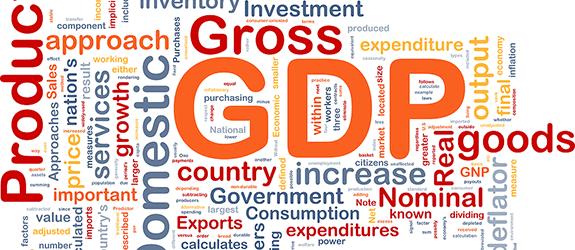The National Accounts Committee (NAC) is likely to estimate a GDP growth rate of more than 5 per cent, at its meeting, convened to finalise the national accounts for the outgoing financial year (FY17) here on Monday.
An official source said that the GDP growth rate will surpass the 5 per cent figure after a decade. After the global financial crisis, Pakistan faced a worse energy crisis during the last decade leading to a decline in production and exports. Official estimates put a 2 per cent GDP loss every year due to the energy crisis.
The improvement in electricity supply was mainly due to the import of LNG have lessened the crisis in the urban load centres of Punjab. The local manufacturing sector has revived but so far exports have not picked up due to various reasons, officials said.
The committee will discuss provisional growth figures for the outgoing financial year and finalise figures for the last financial year. The government had projected a growth target of 5.5 per cent for the current fiscal year, as compared to 4.7 per cent GDP growth of last fiscal year.
The GDP growth is estimated to remain close to 5.2 per cent, as already assessed by the World Bank. The growth would be in the range of 5.2 to 5.5 per cent and the final figure would be assessed by the committee. Usually, the growth rate is close to the assessment of the IFIs, who have all estimated a growth rate of more than 5 per cent for Pakistan, the source said.
There is an improvement in the agriculture sector that showed a negative growth first time in 40 years last financial year, the source said adding that the incentives provided on agriculture inputs like reducing GST on fertiliser have played an important role in crop output enhancement. All the major crops like wheat, maize, rice and sugarcane have shown an increase in production. Cotton production has remained low but is bigger than last year’s yield.
However, the source said that the depressed commodity prices continue to affect the farming community. The growers of wheat, rice and sugarcane got less return on their produce. If the government had been able to export the surplus commodities, it would have further improved the agriculture output.
The wheat production is estimated to be over 26 million tonnes. The government is procuring 6.9 million tonnes from the farmers to stabilise the prices of the commodity. The production of sugar has massively increased over the last two years from 5 million tonnes to 7 million tonnes. The major reason attributed is the best cash payment for the produce as compared to other agriculture products.
The source said that the manufacturing sector has shown good growth. The availability of electricity and gas have led to the increase in the output of manufacturing sector. During last year, the government announced zero load shedding of electricity for the industrial sector. The industry was also allowed to purchase imported LNG for power generation. This helped major units to revive their industrial output.
The government also provided tax incentives to five major export-oriented sectors. The objectives were to lower their production costs due to high energy tariff to keep them competitive in the international markets.
The services sector, the source said had shown good results like the past years. The major players in the sector financial services and technology also showed good progress this year.
























